-
 bitcoin
bitcoin $118548.520763 USD
3.67% -
 ethereum
ethereum $4352.564943 USD
4.79% -
 xrp
xrp $2.964058 USD
4.22% -
 tether
tether $1.000565 USD
0.05% -
 bnb
bnb $1028.372955 USD
1.46% -
 solana
solana $221.373507 USD
6.00% -
 usd-coin
usd-coin $0.999933 USD
0.02% -
 dogecoin
dogecoin $0.248633 USD
6.85% -
 tron
tron $0.341444 USD
2.38% -
 cardano
cardano $0.852946 USD
5.82% -
 hyperliquid
hyperliquid $47.869306 USD
6.15% -
 chainlink
chainlink $22.561476 USD
6.01% -
 ethena-usde
ethena-usde $1.001258 USD
0.05% -
 avalanche
avalanche $30.660000 USD
2.06% -
 stellar
stellar $0.400917 USD
9.76%
What is the SHA-256 algorithm?
SHA-256 is a secure, one-way cryptographic hash function essential to Bitcoin's proof-of-work, ensuring data integrity and blockchain immutability.
Jul 27, 2025 at 03:15 am
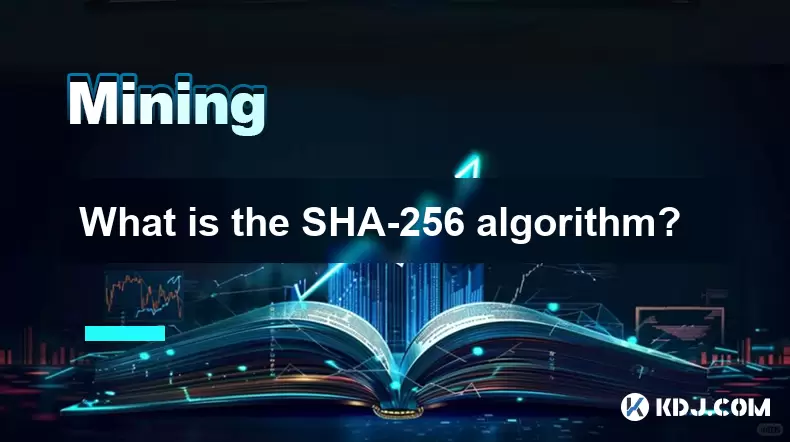
Understanding the Core of SHA-256 in Cryptography
The SHA-256 algorithm stands for Secure Hash Algorithm 256-bit and is a member of the SHA-2 family of cryptographic hash functions developed by the National Institute of Standards and Technology (NIST). It is widely used in various applications within the cryptocurrency ecosystem, most notably in Bitcoin. The algorithm takes an input of any length and produces a fixed-size 256-bit (32-byte) hash output. This output is typically represented as a 64-character hexadecimal string. The deterministic nature of SHA-256 ensures that the same input will always produce the same hash, which is essential for verifying data integrity.
One of the key properties of SHA-256 is that it is a one-way function, meaning it is computationally infeasible to reverse the process and determine the original input from the hash. This feature is critical in securing blockchain transactions and protecting user privacy. Even a minor change in the input—such as altering a single character—results in a completely different hash due to the avalanche effect, making it extremely sensitive to input variations.
Role of SHA-256 in Bitcoin Mining
In the context of Bitcoin, SHA-256 is central to the proof-of-work (PoW) consensus mechanism. Miners compete to solve a cryptographic puzzle that involves finding a hash below a specific target value. This is achieved by repeatedly hashing a block header, which includes the previous block’s hash, a Merkle root of transactions, a timestamp, and a nonce. The goal is to find a nonce such that the resulting SHA-256 hash of the block header meets the network’s difficulty requirements.
The process involves the following steps:
- Miners gather pending transactions and create a candidate block.
- They compute the Merkle root by hashing transaction pairs recursively until a single hash is obtained.
- The block header is assembled with the Merkle root, previous block hash, timestamp, and other metadata.
- A nonce is appended and incremented iteratively.
- The entire block header is hashed twice using SHA-256 (double-SHA-256).
- If the resulting hash is less than the current difficulty target, the miner broadcasts the block to the network.
This process requires massive computational power and is designed to be resource-intensive to prevent malicious actors from easily altering the blockchain.
How SHA-256 Ensures Blockchain Security
The immutability of the blockchain relies heavily on SHA-256. Each block contains the hash of the previous block, forming a cryptographic chain. If an attacker attempts to modify a transaction in a previous block, the hash of that block changes, which invalidates all subsequent blocks. Recomputing the proof-of-work for all affected blocks would require more computational power than the rest of the network combined, making such an attack economically and technically impractical.
Additionally, SHA-256 contributes to transaction integrity. Every transaction is hashed and included in the Merkle tree. Any tampering with transaction data would alter the Merkle root, which is part of the block header. Since the block header is hashed to create the block’s identifier, any discrepancy is immediately detectable by nodes validating the chain.
The algorithm’s resistance to collision attacks—where two different inputs produce the same hash—is another critical security feature. No practical collision has been found in SHA-256 to date, reinforcing trust in its use across decentralized systems.
Technical Breakdown of the SHA-256 Hashing Process
The internal operation of SHA-256 involves several stages: preprocessing, initialization, message scheduling, and compression. The input message is first padded to ensure its length is congruent to 448 modulo 512. A 64-bit representation of the original message length is then appended, making the total length a multiple of 512 bits.
The algorithm uses eight working variables (a through h), initialized with specific constant values derived from the fractional parts of cube roots of the first eight prime numbers. These constants are:
- h0 = 0x6a09e667
- h1 = 0xbb67ae85
- h2 = 0x3c6ef372
- h3 = 0xa54ff53a
- h4 = 0x510e527f
- h5 = 0x9b05688c
- h6 = 0x1f83d9ab
- h7 = 0x5be0cd19
The padded message is divided into 512-bit chunks. For each chunk:
- The 512 bits are split into sixteen 32-bit words.
- These words are expanded into sixty-four 32-bit words using a message schedule that applies XOR and bit rotation operations.
- A series of sixty-four rounds are executed, each updating the working variables using logical functions, constant values, and modular addition.
- After processing all chunks, the final hash is obtained by concatenating the updated values of a through h.
This structured approach ensures both efficiency and cryptographic strength.
Applications of SHA-256 Beyond Bitcoin
While Bitcoin is the most prominent use case, SHA-256 is employed in various other cryptographic protocols and systems. It is used in digital signatures, certificate authorities, and secure communication protocols like TLS/SSL. In blockchain networks beyond Bitcoin, SHA-256 is sometimes used in hybrid consensus models or for generating unique identifiers.
Some altcoins, such as Bitcoin Cash and Bitcoin SV, also utilize SHA-256 to maintain compatibility with Bitcoin’s mining infrastructure. Additionally, SHA-256 is used in smart contract platforms for hashing contract code or verifying off-chain data. Its predictability and resistance to tampering make it ideal for generating secure, verifiable commitments in decentralized applications.
Frequently Asked Questions
Can SHA-256 be reversed to find the original input?No, SHA-256 is designed as a one-way function. There is no known method to reverse the hash and retrieve the original data. Brute-force attacks are theoretically possible but computationally infeasible due to the vast input space.
Why does Bitcoin use double SHA-256 (SHA-256d)?Bitcoin applies SHA-256 twice (hash = SHA-256(SHA-256(data))) to protect against length extension attacks. This practice increases security by ensuring that an attacker cannot exploit the internal state of the first hash to generate valid extensions.
Is SHA-256 vulnerable to quantum computing?While quantum computers could theoretically reduce the effective security of SHA-256 using Grover’s algorithm, they would still require approximately 2^128 operations to find a preimage, which remains computationally prohibitive with current and foreseeable quantum technology.
How does SHA-256 differ from SHA-1 or MD5?SHA-256 offers a larger digest size (256 bits vs. 160 for SHA-1 and 128 for MD5) and is resistant to known collision attacks that have compromised SHA-1 and MD5. It is considered cryptographically secure, whereas SHA-1 and MD5 are deprecated for security-critical applications.
Disclaimer:info@kdj.com
The information provided is not trading advice. kdj.com does not assume any responsibility for any investments made based on the information provided in this article. Cryptocurrencies are highly volatile and it is highly recommended that you invest with caution after thorough research!
If you believe that the content used on this website infringes your copyright, please contact us immediately (info@kdj.com) and we will delete it promptly.
- BlockDAG, DOGE, HYPE Sponsorship: Crypto Trends Shaping 2025
- 2025-10-01 00:25:13
- Deutsche Börse and Circle: A StableCoin Adoption Powerhouse in Europe
- 2025-10-01 00:25:13
- BlockDAG's Presale Buzz: Is It the Crypto to Watch in October 2025?
- 2025-10-01 00:30:13
- Bitcoin, Crypto, and IQ: When Genius Meets Digital Gold?
- 2025-10-01 00:30:13
- Stablecoins, American Innovation, and Wallet Tokens: The Next Frontier
- 2025-10-01 00:35:12
- NBU, Coins, and Crypto in Ukraine: A New Yorker's Take
- 2025-10-01 00:45:14
Related knowledge
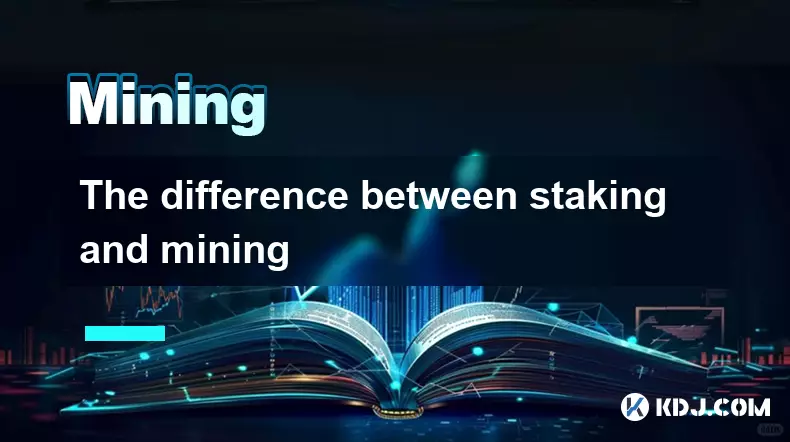
The difference between staking and mining
Sep 24,2025 at 05:18am
Understanding Staking in the Cryptocurrency Ecosystem1. Staking involves holding funds in a cryptocurrency wallet to support the operations of a block...
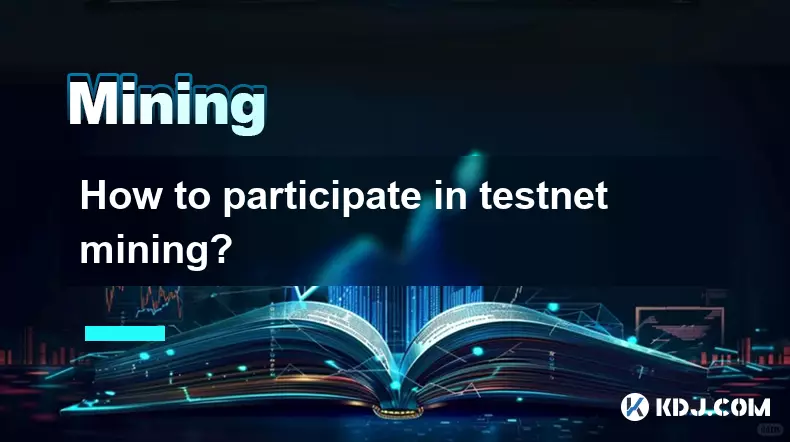
How to participate in testnet mining?
Sep 22,2025 at 09:18am
Understanding Testnet Mining in the Crypto Ecosystem1. Testnet mining is a method used by blockchain developers to simulate real-world conditions on a...

How to dispose of abandoned mining machines?
Sep 19,2025 at 08:19pm
Assessing the Condition of Abandoned Mining Rigs1. Begin by inspecting each mining machine for visible damage, corrosion, or missing components. Machi...

How to identify high-quality mining pools?
Sep 21,2025 at 03:19pm
Reputation and Track Record1. A mining pool’s reputation is built over time through consistent performance and transparency. Pools that have operated ...
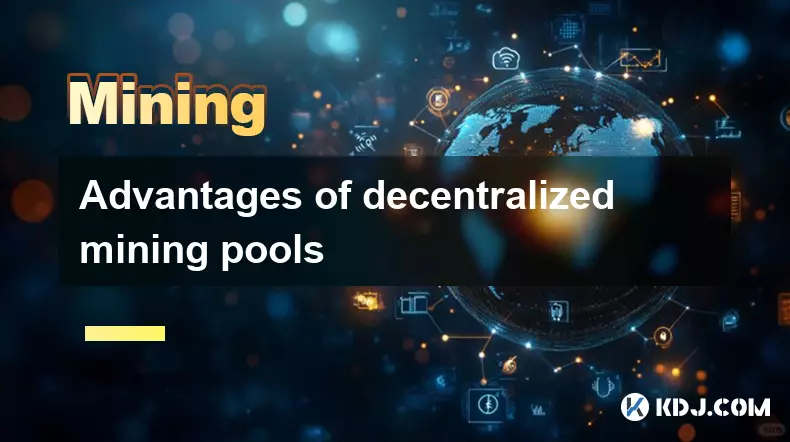
Advantages of decentralized mining pools
Sep 20,2025 at 04:36pm
Enhanced Security and Resistance to Censorship1. Decentralized mining pools operate on blockchain-based smart contracts, eliminating the need for a ce...
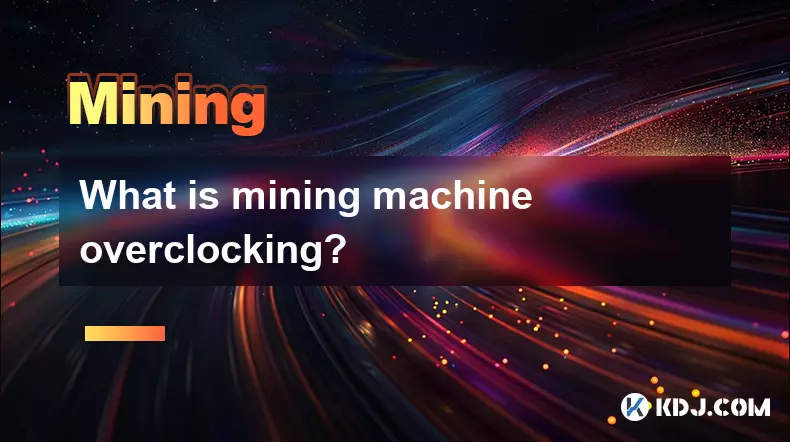
What is mining machine overclocking?
Sep 21,2025 at 07:19pm
Understanding Mining Machine Overclocking1. Mining machine overclocking refers to the process of increasing the operating frequency of a cryptocurrenc...

The difference between staking and mining
Sep 24,2025 at 05:18am
Understanding Staking in the Cryptocurrency Ecosystem1. Staking involves holding funds in a cryptocurrency wallet to support the operations of a block...

How to participate in testnet mining?
Sep 22,2025 at 09:18am
Understanding Testnet Mining in the Crypto Ecosystem1. Testnet mining is a method used by blockchain developers to simulate real-world conditions on a...

How to dispose of abandoned mining machines?
Sep 19,2025 at 08:19pm
Assessing the Condition of Abandoned Mining Rigs1. Begin by inspecting each mining machine for visible damage, corrosion, or missing components. Machi...

How to identify high-quality mining pools?
Sep 21,2025 at 03:19pm
Reputation and Track Record1. A mining pool’s reputation is built over time through consistent performance and transparency. Pools that have operated ...

Advantages of decentralized mining pools
Sep 20,2025 at 04:36pm
Enhanced Security and Resistance to Censorship1. Decentralized mining pools operate on blockchain-based smart contracts, eliminating the need for a ce...

What is mining machine overclocking?
Sep 21,2025 at 07:19pm
Understanding Mining Machine Overclocking1. Mining machine overclocking refers to the process of increasing the operating frequency of a cryptocurrenc...
See all articles










































































